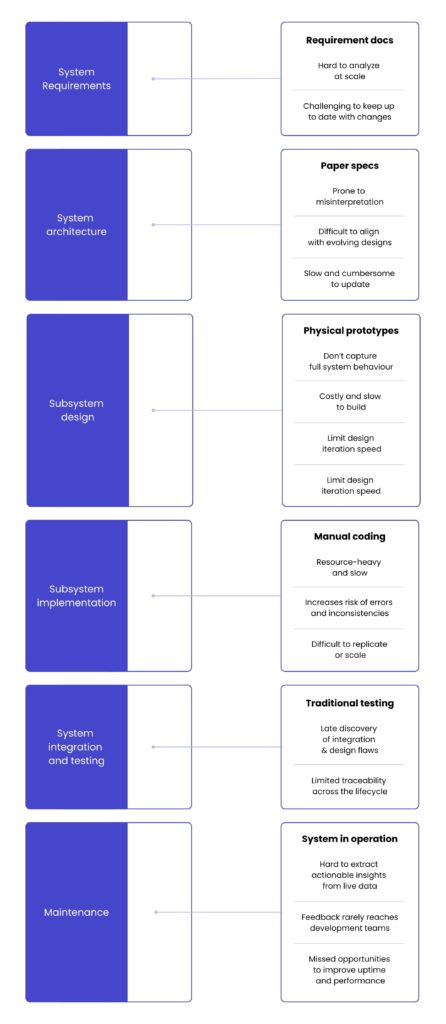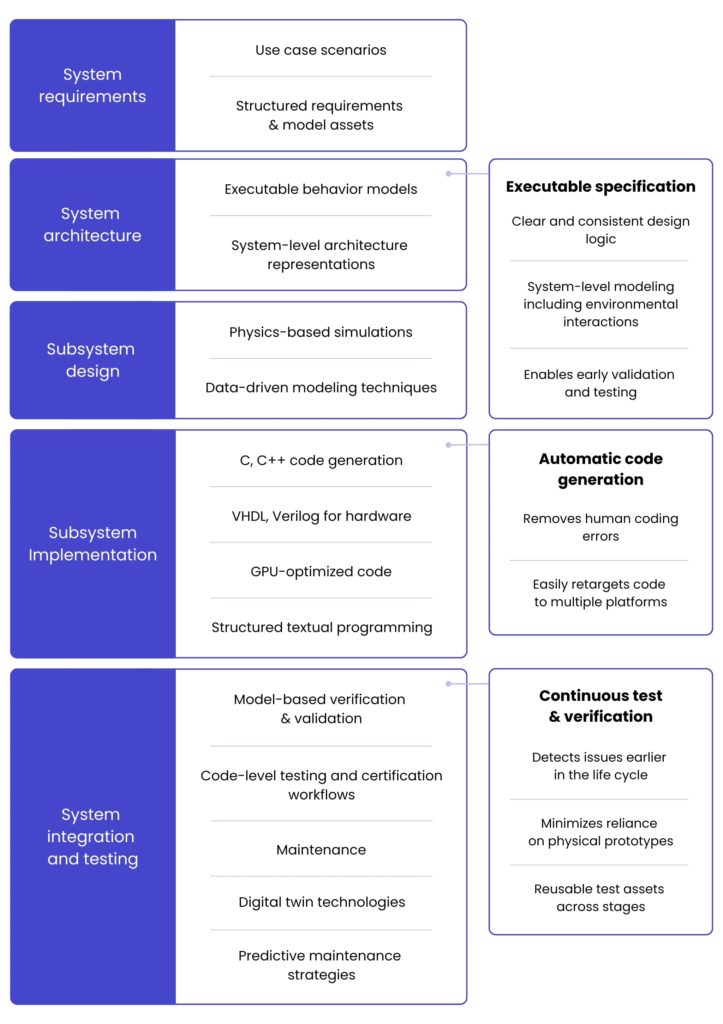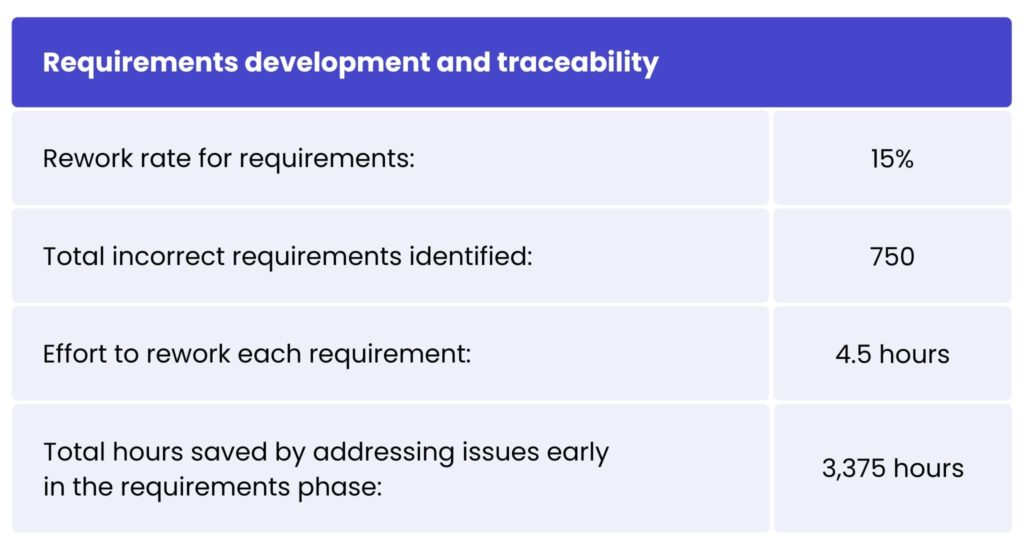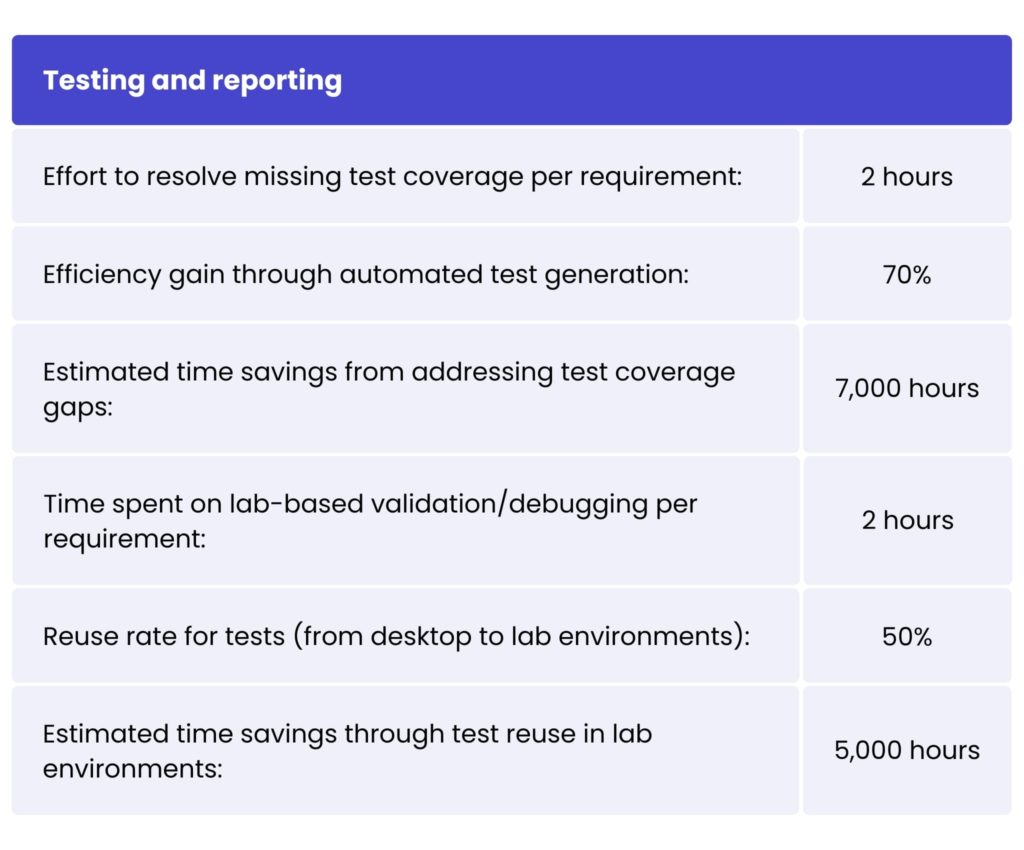The economic impact of model-based development
As systems grow in complexity, particularly those blending physical components with digital intelligence, traditional development methods are struggling to keep up. Maintaining quality while managing costs has become increasingly difficult.
To address this, many organisations are turning to model-based development (MBD) as a more efficient and scalable alternative. But before making the switch, businesses need a clear understanding of the value it brings. That’s where a structured ROI framework comes in — helping to quantify the potential cost savings and process improvements that model-based development can deliver compared to conventional approaches.
As customer expectations grow, both in scale and complexity, so does the logic and control software behind modern systems. Developing millions of lines of code under tight deadlines is the new normal, and many organisations are finding that traditional development methods simply can’t keep up.
Model-based development offers a smarter alternative. It helps detect and eliminate defects early, before they become costly issues downstream. By reducing the number of latent errors and streamlining system validation, model-based development enables teams to deliver high-quality solutions, whether it’s in industrial automation, robotics, connected devices, or smart infrastructure, faster and more cost-effectively. It’s not just a technical shift, but a strategic advantage.
Comparing traditional software development compared to model-based software development
Traditional development processes often follow a linear path, with each stage handled in separate tools and environments. Manual handovers, fragmented workflows, and repeated rework introduce friction at every step, from defining system requirements all the way to deployment and operations.
Without the model-based development approach, these inefficiencies add up quickly. They slow teams down, increase the risk of miscommunication, and make it harder to maintain quality across the lifecycle of complex, interconnected systems.

System requirements are often documented in text-based tools, while architectures are mapped out in static diagrams. This separation makes it hard to keep everything aligned as changes occur. Subsystems are typically developed in domain-specific environments, which means teams can’t validate how things work together until late in the process and often after implementation.
Then comes the manual code translation: slow, error-prone, and hard to scale. Each phase introduces its own set of issues, and many of them slip through until testing, when fixing them is most expensive.
With no unified environment, lots of manual work, and little access to real-time operational data, organisations miss out on early validation, valuable insights, and continuous improvement. The result? Higher costs, longer timelines, and untapped performance gains.

Model-based software development takes a different route – one that puts models at the centre of the development process from day one.
It starts with the same set of system requirements, but instead of turning them into lengthy specs, those requirements are translated into an executable system architecture. This includes both structural and behavioural models that do more than just describe the system – they bring it to life.
These models help teams clarify what’s being built and why, reducing ambiguity early on. From there, they form the foundation for detailed subsystem design, keeping everything aligned and ready for validation as the system evolves.
With tools like MATLAB® and Simulink®, teams can simulate their designs at the system level early in the development process, catching integration issues before any code is written.
Once the design is ready, engineers can automatically generate production-ready code and test cases directly from the models. This removes the risk of human error that often comes with manual coding and keeps everything within one environment — from defining requirements to running tests.
Even better, testing can start much earlier. By simulating model behaviour against requirements, teams can validate assumptions from day one. That means fewer bugs, less rework, and a lower overall cost of development.
Savings in systems engineering
Research shows that systematic use of models in system development can lead to significant cost reductions — up to 55% within just two years. This is because models replace long, often overcomplicated text requirements with a clearer, shared visual language.
By using simulation early on, teams can validate and refine system requirements before a single line of code is written or a prototype is built. This not only reduces errors but also speeds up decision-making and encourages collaboration across departments.
Savings in development
Organisations that switch to model-based design see development time cut even up to 80% compared to traditional development methods. These gains are driven by smarter requirements analysis and by shifting testing and verification to the earliest stages of the process.
By simulating requirements and designs upfront, teams can catch and fix issues before they snowball into expensive problems later. It’s a proactive approach — one that pays off quickly by reducing rework, speeding up development, and improving overall product quality.
Calculating savings using the model-based design ROI framework
The model-based design ROI framework helps estimate the value of adopting this approach on real-world projects. Taking into account factors like project scope, team size, and complexity, it uses the widely recognised COCOMO model to calculate the expected cost of traditional development.
Then, it factors in the efficiency gains from Model-Based Design, such as early defect detection, automated code generation, and streamlined collaboration, which reveal the projected cost of development using this modern approach. Originally developed with the rigorous demands of aerospace and defense in mind, the COCOMO model delivers credible, quantifiable insight into how model-based design can impact your bottom line.
The ROI of Model-Based Design comes from measurable gains at every phase of development, from requirements and design through to implementation and testing. These gains are calculated using trusted industry benchmarks, including data from SEI, IEEE, and multiple independent studies.
Because every organisation is different in terms of processes, scope, and experience with Model-Based Design, the ROI framework is designed to be flexible. It can be tailored to reflect the realities of a specific team or project.
Example: A software project with 50,000 lines of code. Using the widely recognised COCOMO model, traditional development methods would run up a bill of around $6 million. By contrast, with model-based design, the total cost drops to $3 million, a 50% reduction.
This isn’t just theory. The framework breaks down each phase of development, identifies where traditional methods introduce inefficiencies, and uses hard data, including interviews, customer projects, and industry averages to quantify the savings. Because each phase is calculated individually, the model also supports gradual implementation, making it easy to take a step-by-step approach to adoption.
Cutting costs during requirements development
To show how the ROI framework plays out in practice, let’s take a closer look at a common challenge in the requirements phase.
In traditional workflows, unclear, inconsistent, or untestable requirements often slip through and resurface later as expensive rework. With model-based design, these issues can be flagged and resolved early by validating requirements through models, reducing the risk of costly surprises downstream.
Industry data shows that, on average, around 15% of requirements need reworking, which aligns with feedback from engineering teams across multiple sectors. In our baseline scenario, each of these requirement defects takes roughly 4.5 hours to fix if discovered after the initial phase.
By catching them upfront with model-based design, organisations can save thousands of engineering hours. In the baseline case, that’s over 3,000 hours reclaimed – time that can be redirected to innovation, testing, or delivery. This is just one example of how the framework helps quantify savings and justify investment from day one.

Cutting costs during testing
Testing is one of the most resource-intensive stages of development and it’s where the biggest efficiency gains can be made with model-based design.
This ensures full coverage and enables early validation, so if there is a problem, it can be found during simulation and solved even before it reaches the unit testing.
These tests aren’t one-and-done, either. They can be reused across development stages, from simulations on the desktop to hardware-in-the-loop setups, significantly reducing duplication of effort. Reporting is streamlined as well, with automated, standards-compliant test documentation ready when needed.
In a typical project with around 5,000 requirements, this approach can free up as much as 12,000 engineering hours. That’s time saved not just in testing, but in faster cycles, fewer errors, and smoother certification processes.

The bigger picture: overall savings
The ROI framework breaks down inefficiencies across every stage of development.
In the example project, nearly half of the total savings came from the testing phase. That’s not just because of automated test generation, but because fewer defects made it that far in the first place.
When requirements are clearer and validated earlier, designs are more robust, which means less rework downstream. With continuous testing built into the process from day one, more issues are caught where they start, not where they surface. That leads to cleaner code, fewer surprises, and lower total development costs.
While the ROI framework helps quantify cost savings across the development lifecycle, the financial upside of model-based design doesn’t stop there.
Faster development means faster time to market, which is a key advantage in industries where innovation cycles are constantly accelerating. And with fewer delays, less overhead, and clearer communication across teams, organisations can shift focus from firefighting to forward-thinking. That means more time for strategic initiatives, more room for innovation, and more impact where it matters most.
Are you interested in model-based development?
If model-based development is on your radar, we’re here to help.
At Spyrosoft, we bring hands-on experience in delivering end-to-end model-based software development services tailored for Industry 4.0 and beyond. From early-stage requirements to final testing, we support the full development lifecycle with a focus on precision, speed, and reliability.
Get in touch to see how our team can help you build smarter, faster, and with fewer surprises along the way.
About the author
Contact us





